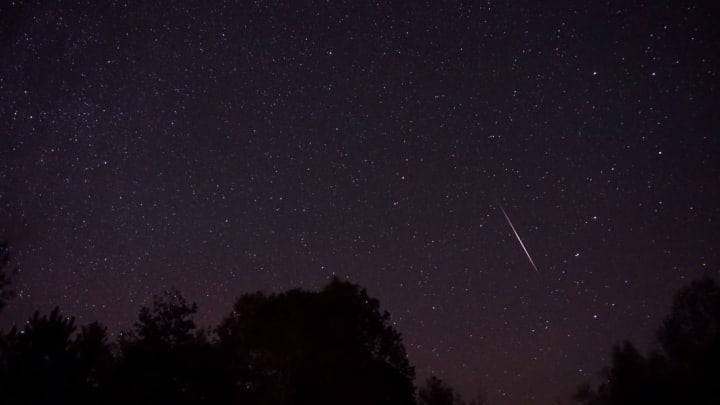Temperatures are dropping and days are getting shorter in many parts of the U.S., but there are still plenty of reasons to get outside this fall—not the least of which are the three meteor showers that will be active in the coming weeks. Here's what you need to know to catch the Draconid, Orionid, and Taurid meteor showers in October and November.
When to See the Draconid Meteor Shower
October is an eventful time for stargazers. Throughout the month, you'll have a chance of spotting a shooting star when you step outside at night. In early October, look for the Draconids. The shower lasts from October 6 to the 10th and peaks on the nights of the 7th and 8th this year. The meteors appear to originate high in the sky near the head of the constellation Draco around nightfall, which makes the Draconids one of the few meteor showers that's better viewed in the evening rather than the early morning hours. It's not a particularly active shower, peaking with five shooting stars per hour in most years, but it has been known to produce thousands of meteors per hour.
When to see the Orionid Meteor Shower
After looking for the Draconids, check out the Orionid meteor shower in late October. The shower, which appears to emerge from the constellation Orion's upraised "arm," lasts nearly the whole month—from October 2 to November 7—but it peaks on October 21 and the 22nd in 2020. This event is best viewed in the early morning hours before sunrise. On the 21st and 22nd, the waxing crescent moon will set in the evenings, providing dark skies and optimal viewing conditions. Up to 20 shooting stars will be visible per hour when skies are darkest.
When to see the South and North Taurid Meteor Showers
The South Taurids are also active throughout October, but the best time to see them from a vantage point in the Southern Hemisphere is early November. (The North Taurids, visible mainly from the Northern Hemisphere, peak around November 11-12.) From the night of November 4 to the predawn hours of November 5, the shower will be at its zenith. Only around five shooting stars per hour will be visible at this time, and the bright waning gibbous moon will make them even more difficult to spot. But the South Taurids are still worth a late-night trip to your backyard; this shower is famous for its fireballs, which are spectacularly bright meteors. Any meteor brighter than Venus in the night sky is technically a fireball. No matter what type of meteor shower you're aiming to see, you have a reason to look up this autumn.
[h/t Earthsky]
